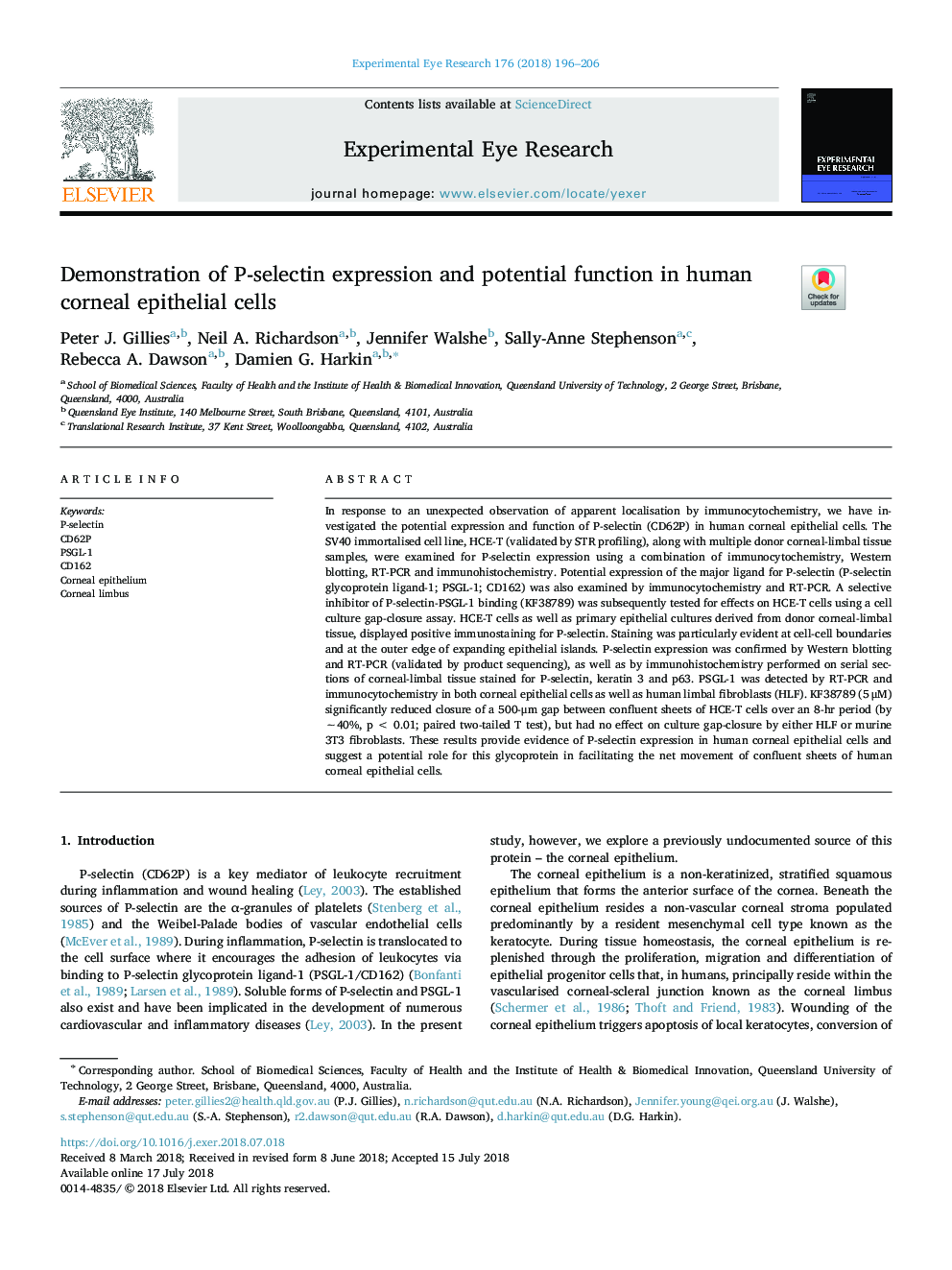| Article ID | Journal | Published Year | Pages | File Type |
|---|---|---|---|---|
| 8791888 | Experimental Eye Research | 2018 | 11 Pages |
Abstract
In response to an unexpected observation of apparent localisation by immunocytochemistry, we have investigated the potential expression and function of P-selectin (CD62P) in human corneal epithelial cells. The SV40 immortalised cell line, HCE-T (validated by STR profiling), along with multiple donor corneal-limbal tissue samples, were examined for P-selectin expression using a combination of immunocytochemistry, Western blotting, RT-PCR and immunohistochemistry. Potential expression of the major ligand for P-selectin (P-selectin glycoprotein ligand-1; PSGL-1; CD162) was also examined by immunocytochemistry and RT-PCR. A selective inhibitor of P-selectin-PSGL-1 binding (KF38789) was subsequently tested for effects on HCE-T cells using a cell culture gap-closure assay. HCE-T cells as well as primary epithelial cultures derived from donor corneal-limbal tissue, displayed positive immunostaining for P-selectin. Staining was particularly evident at cell-cell boundaries and at the outer edge of expanding epithelial islands. P-selectin expression was confirmed by Western blotting and RT-PCR (validated by product sequencing), as well as by immunohistochemistry performed on serial sections of corneal-limbal tissue stained for P-selectin, keratin 3 and p63. PSGL-1 was detected by RT-PCR and immunocytochemistry in both corneal epithelial cells as well as human limbal fibroblasts (HLF). KF38789 (5â¯Î¼M) significantly reduced closure of a 500-μm gap between confluent sheets of HCE-T cells over an 8-hr period (by â¼40%, pâ¯<â¯0.01; paired two-tailed T test), but had no effect on culture gap-closure by either HLF or murine 3T3 fibroblasts. These results provide evidence of P-selectin expression in human corneal epithelial cells and suggest a potential role for this glycoprotein in facilitating the net movement of confluent sheets of human corneal epithelial cells.
Related Topics
Life Sciences
Immunology and Microbiology
Immunology and Microbiology (General)
Authors
Peter J. Gillies, Neil A. Richardson, Jennifer Walshe, Sally-Anne Stephenson, Rebecca A. Dawson, Damien G. Harkin,
